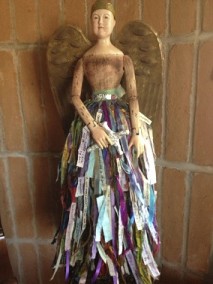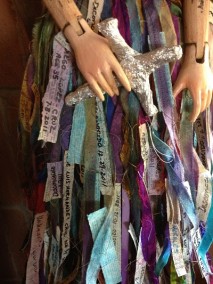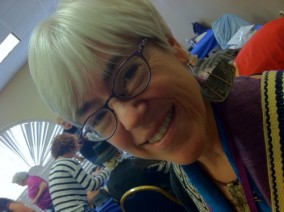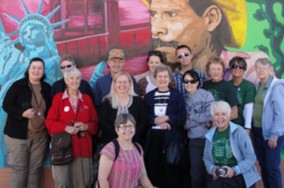[sociallocker]

A boy crawls through a tunnel in the Gaza Strip to bring back supplies to his family and neighbors despite the high risk of the tunnel being flooded, gassed, or bombed. On the eve of the Arab Spring in Libya, a girl and her best friend disguise themselves as boys to train for a school sports competition, knowing that if they’re caught they will be severely punished. Four young girls, three of them pregnant, decide to escape their abusive husbands and attempt to cross from Morocco to Spain.
Set against these turbulent backdrops, the children’s voices are free of political influence and remind the reader of the distilled best of human relationships. With no resources and armed with only loyalty, guts, and tenacity, they risk their lives for their friends in the belief that this is the only right thing to do
What People Are Saying about Small Change
Small Change does what great fiction should do. Rather than strive for newness for the sake of novelty, or reinvent language to showcase the writer’s chops, it approaches language in a new way because the material—struggling for life and love in the Middle East—demands it. Fresh, invigorating, and profound, I hope you enjoy these stories as much as I did.
–David Treuer
Fiction judge of the 2016 Gold Line Press Competition
Each of Hunter’s three stories does what stories should do, using small moments in time to touch larger themes. Here the touching, sometimes tactile, sometimes cerebral, sometimes brutal, sometimes beautiful, presses against the Middle East, a place where turmoil too often touches its people. Small Change points to big change with quiet grace, touching hard places and hopeful places.
–Adam Berlin
Author of Both Members of the Club, The Number of the Missing, Belmondo Style, and Headlock. He teaches at John Jay College of Criminal Justice, and is editor of J Journal: New Writing on Justice.
I was so gripped and moved by those three stories, and they've continued to haunt me. My favorite (though it's hard to choose) is "Jewels We Took With Us." It is so heartbreaking to think of the girls' brutal and grinding lives, so harrowing to imagine their near-sure deaths at sea. But it's also profoundly inspirational to experience their loyalty, determination, and friendship.
–Jean Hegland, author of Into the Forest, Windfalls, Still Time
Publisher’s Information
<li><b>PUBLISHER:</b> Gold Line Press</li>
<li><b>ISBN:</b> 978-1938900204</li>
<li><b>DIMENSIONS:</b> 0.2 x 5.2 x 7 inches</li>
<li><b>PAGES:</b> 57]</li>
<li><b>PRICE:</b> $10.00</li>
<li><b>RELEASE DATE:</b> 06/01/2016</li>
<li><b><a href="http://amzn.to/2uYI8JW" target="blank">PURCHASE HERE</a></b></li>
Recommended Works by Sandra Hunter
Favorite Eckleburg Work: https://eckleburg.org/fiction3/?1588-page=4
White Trash by Nancy Isenberg
An unsparing and riveting examination of the history of class conflicts in the US. Nancy Isenberg starts at the year dot: when the British decided to "export" what they considered the unsightly and offensive types to America. These included criminals, but also children sold by parents and the homeless. The descendants of these people became "poor white trash". This is not an easy read but it's essential to understand the roots of American history — all of them, no matter how ugly. READ MORE
Rebecca Solnit by Chimamanda Ngozi Adichie, Americanah
I'm a fan of anyone who writes about walking: Freya Stark, Robert Macfarlane, Bruce Chatwin, Patrick Fermor, et al. This book is a combination of my favorite things: walking and Rebecca Solnit. The book does have some focus on writing — but it's more a study of what arises because of walking, and in Ms. Solnit's company, it's always provocative and inspiring. READ MORE
Discussion Questions for Small Change
- Why are the stories told from children's perspectives? What effect does this have on the reader?
-
In "Jewels We Took With Us", there are two timelines. One is set in the present, where the action is taking place. The other moves backwards. Why did the author do this?
-
In "30 Below", the narrator has to bring back a calf through the tunnel. Why is this important to the story?
About Sandra Hunter
Sandra Hunter’s fiction has received the 2016 Gold Line Press Chapbook Prize, October 2014 Africa Book Club Award, 2014 H.E. Francis Fiction Award, and two Pushcart Prize nominations. Her story “Finger Popping” won second place in the 2017 Katherine Anne Porter Prize in Short Fiction. She is a 2017 MacDowell Fellow. Her debut novel, Losing Touch, was released in July 2014. Her fiction chapbook, Small Change, was published in June 2016. When she's not working on her third novel, Fissures of Men, she teaches English and Creative Writing at Moorpark College and runs writing workshops in Ventura and Los Angeles. Favorite dessert: rose-flavored macarons.
Do You Have a Book Launching? Submit Your Book to The Eckleburg Book Club…
[leaky_paywall_register_form]
A boy crawls through a tunnel in the Gaza Strip to bring back supplies to his family and neighbors despite the high risk of the tunnel being flooded, gassed, or bombed. On the eve of the Arab Spring in Libya, a girl and her best friend disguise themselves as boys to train for a school sports competition, knowing that if they’re caught they will be severely punished. Four young girls, three of them pregnant, decide to escape their abusive husbands and attempt to cross from Morocco to Spain.
Set against these turbulent backdrops, the children’s voices are free of political influence and remind the reader of the distilled best of human relationships. With no resources and armed with only loyalty, guts, and tenacity, they risk their lives for their friends in the belief that this is the only right thing to do
[/sociallocker]








